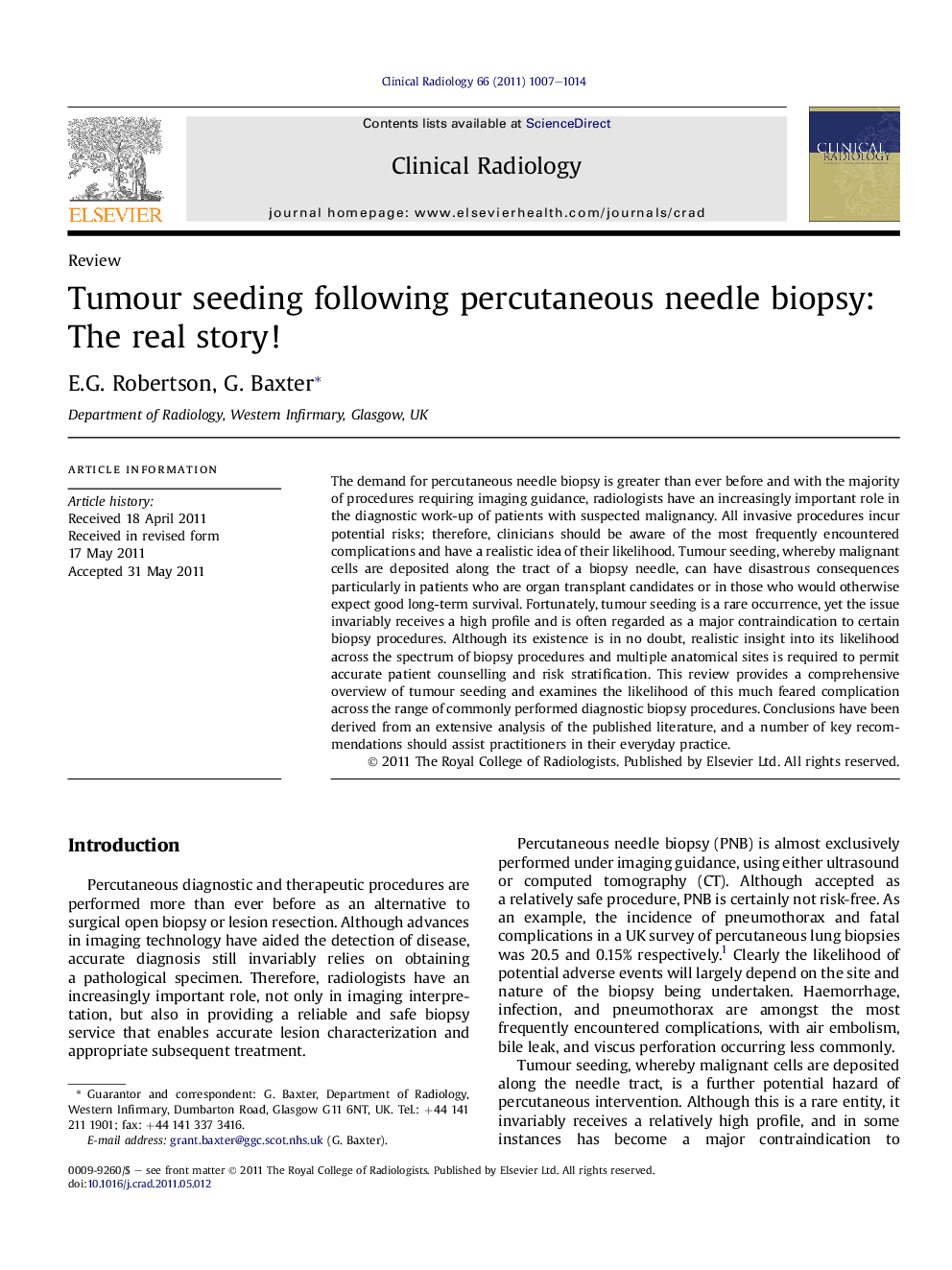| Article ID | Journal | Published Year | Pages | File Type |
|---|---|---|---|---|
| 3981796 | Clinical Radiology | 2011 | 8 Pages |
The demand for percutaneous needle biopsy is greater than ever before and with the majority of procedures requiring imaging guidance, radiologists have an increasingly important role in the diagnostic work-up of patients with suspected malignancy. All invasive procedures incur potential risks; therefore, clinicians should be aware of the most frequently encountered complications and have a realistic idea of their likelihood. Tumour seeding, whereby malignant cells are deposited along the tract of a biopsy needle, can have disastrous consequences particularly in patients who are organ transplant candidates or in those who would otherwise expect good long-term survival. Fortunately, tumour seeding is a rare occurrence, yet the issue invariably receives a high profile and is often regarded as a major contraindication to certain biopsy procedures. Although its existence is in no doubt, realistic insight into its likelihood across the spectrum of biopsy procedures and multiple anatomical sites is required to permit accurate patient counselling and risk stratification. This review provides a comprehensive overview of tumour seeding and examines the likelihood of this much feared complication across the range of commonly performed diagnostic biopsy procedures. Conclusions have been derived from an extensive analysis of the published literature, and a number of key recommendations should assist practitioners in their everyday practice.
